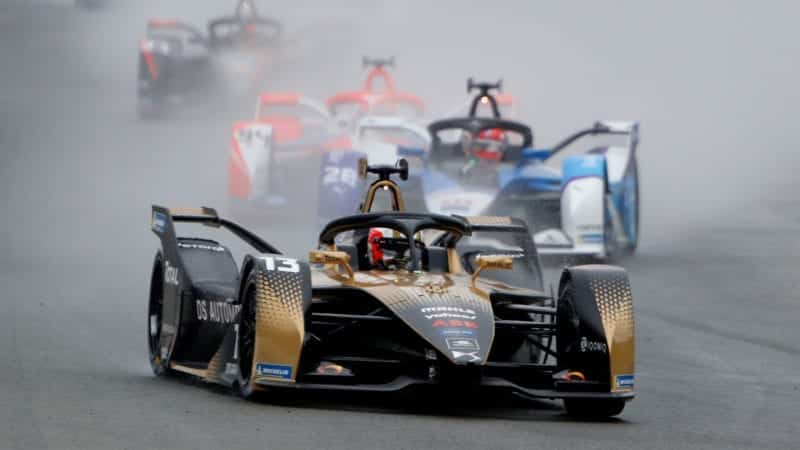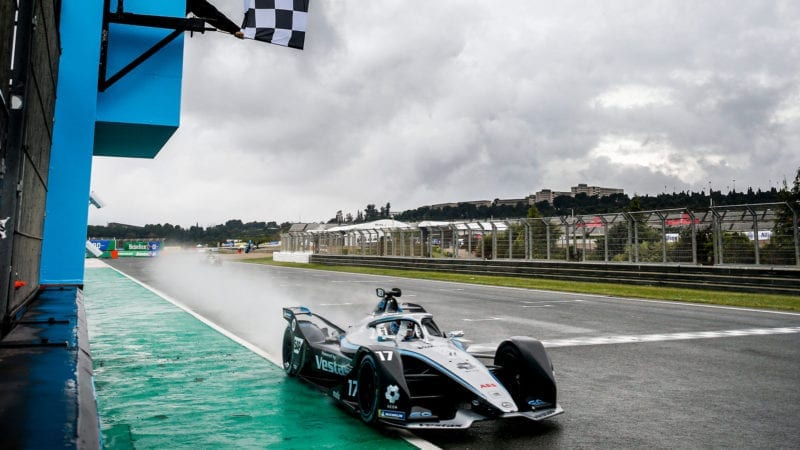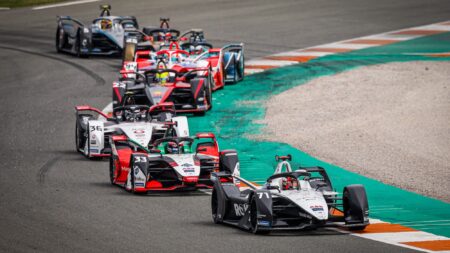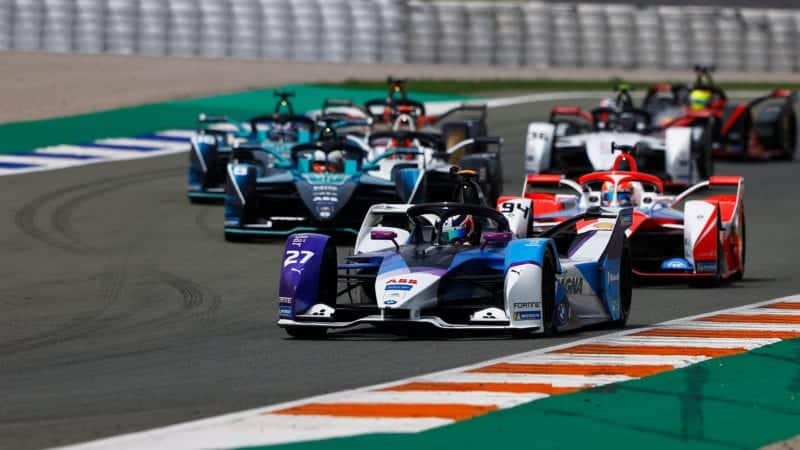In any race, cars run to (close to) zero remaining energy. If they didn’t, you’d be asking the driver why they didn’t have their foot on the throttle. That’s sometimes proven awkward, in Formula E’s normal circumstances, due to its timed format – if the clock keeps running behind the safety car, you might well end up with a situation where you hit 00:00 but have a lot more than one lap’s worth of juice left.
That relies on two things: cars being able to save energy on track and the safety car having a meaningful energy-saving consequence, both of which fell apart on FE’s strange weekend in Valencia. One sharp reprofiling and a vicious jacknife of a chicane ahead of the pit straight couldn’t disguise that Ricardo Tormo is a flowing bike circuit with constant power demand and not a lot of braking, the opposite of FE’s normal street tracks.
“What no one would’ve expected was the spectacle that unfolded”
High energy demands were a given, probably the biggest challenge managing that since Gen1 and the days of quirky-but-inglorious car swapping mid-race. Drivers were cynical about the circuit by Friday, when “it is what it is and it’s the same for everyone” featured strongly in quotes; we all know this season is a compromise and one that’s a lot better than six races in nine days at Tempelhof.
What no one would’ve expected was the spectacle that unfolded. Before the race, we were worried that there would be cars bent round the pit straight chicane, especially in the wet. In reality, we should’ve factored in how high-grip Ricardo Tormo is compared to street surfaces – the all-weather Michelins normally have to ask about the concept of ‘grip’ with the insistence of your cat deciding it’s dinnertime at 2:30pm.




